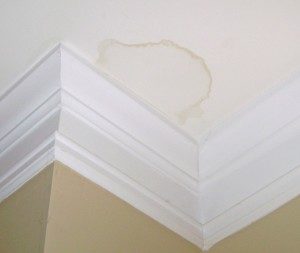Identifying the Six Most Common Causes of Water Leaks in Your Home
Identifying the Six Most Common Causes of Water Leaks in Your Home
Blog Article
What are your thoughts and feelings about How to detect water leaks in your home?

Leakages not just create waste of water yet can additionally create unnecessary damage to your home and promote undesirable natural development. Regrettably, water leaks might go unnoticed since most of the pipework in our home is concealed. By looking and recognizing for daily situations that trigger leaks, you can shield your house from future leaks and also unneeded damage. Today, we will consider 6 leak causes that might be triggering your pipelines to leak.
Encroaching origins
Many water leakages start outside the house as opposed to inside it. If you discover an abrupt decrease in water stress, say in your faucet, take some time to go out and examine your backyard. You might see damp patches or sinkholes in your lawn, which may suggest that tree roots are attacking water lines causing water to seep out. You can have your plumber check for breach, particularly if you have trees or shrubs near your residential property.
Corroded water systems
As time goes by, your plumbing system ages and rust such as corrosion might start eating away the pipelines. This could be the root cause of staining or bending on your water pipes. This calls for an assessment with your plumber immediately. Take into consideration replacing the pipes because they are at a higher danger of deterioration than the more recent models if our plumbing system is old.
Faulty Pipe Joints
Pipe joints can deteriorate over time, resulting in water leaks. If you have loud pipelines that make ticking or banging sounds, particularly when the hot water is turned on, your pipeline joints are possibly under a whole lot of stress.
Immediate temperature changes.
Extreme temperature changes in our pipelines can trigger them to expand and get suddenly. This growth and tightening might trigger fractures in the pipes, specifically if the temperature level are below freezing. It would be best if you kept an eye on how your plumbing functions. The presence of the formerly discussed situations frequently shows a high danger.
Poor Water Connectors
At times, a leak can be triggered by loose tubes and pipelines that provide your appliances. In instance of a water connections leak, you might discover water running straight from the supply line or pools around your home appliances.
Obstructed Drains
Clogged drains could be bothersome and also inconveniencing, but they can often wind up causing an overflow causing break pipes. Maintain removing any products that might drop your drains that might block them to avoid such troubles.
All the above are sources of leakages but not all water leaks result from plumbing leakages; some leaks might come from roofing leakages. All leakages must be fixed quickly to stay clear of water damages.
Leakages not just create waste of water yet can also cause unnecessary damages to your residence and also advertise undesirable natural development. By recognizing and also looking for daily circumstances that trigger leakages, you can secure your house from future leaks and unneeded damages. Today, we will certainly look at 6 leakage triggers that may be causing your pipelines to trickle.
At times, a leakage can be created by loosened pipes as well as pipes that provide your devices. In situation of a water links leak, you may notice water running straight from the supply line or pools around your appliances.
How To Check For Water Leak In Your Home
How To Check for Leaks
The average household's leaks can account for nearly 10,000 gallons of water wasted every year and ten percent of homes have leaks that waste 90 gallons or more per day. Common types of leaks found in the home are worn toilet flappers, dripping faucets, and other leaking valves. These types of leaks are often easy to fix, requiring only a few tools and hardware that can pay for themselves in water savings. Fixing easily corrected household water leaks can save homeowners about 10 percent on their water bills.
To check for leaks in your home, you first need to determine whether you're wasting water and then identify the source of the leak. Here are some tips for finding leaks:
Take a look at your water usage during a colder month, such as January or February. If a family of four exceeds 12,000 gallons per month, there are serious leaks.
Check your water meter before and after a two-hour period when no water is being used. If the meter changes at all, you probably have a leak.
Identify toilet leaks by placing a drop of food coloring in the toilet tank. If any color shows up in the bowl after 10 minutes, you have a leak. (Be sure to flush immediately after the experiment to avoid staining the tank.)
Examine faucet gaskets and pipe fittings for any water on the outside of the pipe to check for surface leaks.
Undetected water leaks can happen without the home or business owner even realizing. If you suspect a water leak, but not able to find the source. It is time to contact a professional water leak detection service, The Leak Doctor.
How To Find a Water Leak In Your Home
https://www.leakdoctor.com/blog/How-To-Check-For-Water-Leak-In-Your-Home_AE197.html

Do you really like reading up on How Fast Water Damage Can Ruin Your Home? Try to leave feedback down the page. We'd be pleased to hear your views about this blog posting. We are looking forward to see you back again in the near future. So long as you enjoyed reading our page kindly make sure you remember to pass it around. Thanks so much for your time spent reading it.
Call Today Report this page